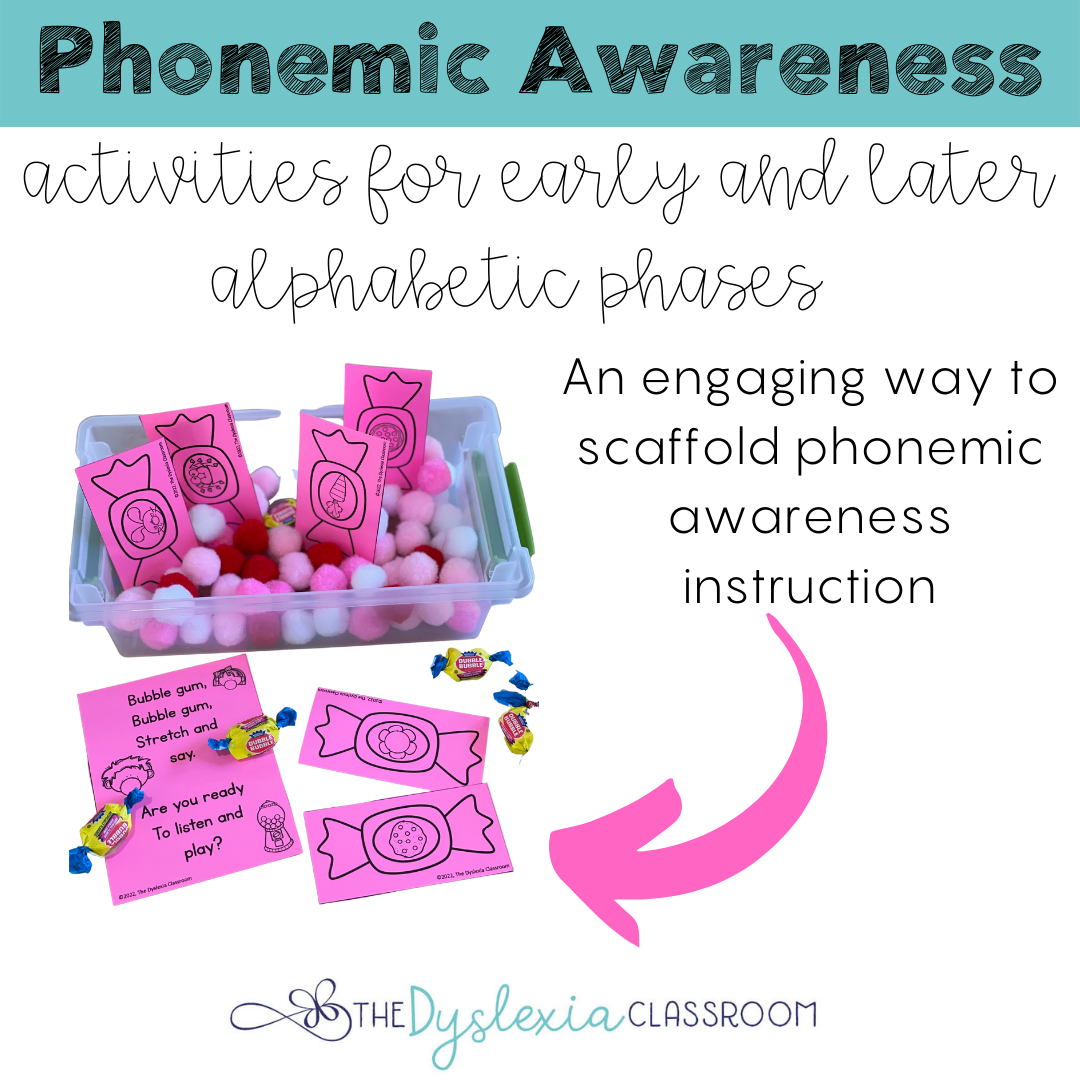How To Build Phonemic Awareness In A Fun Way
Apr 01, 2022
If you have read the National Reading Panel (2000), or one of the many other research reviews, you may have heard the terms phonological awareness and phonemic awareness. These lay the foundation upon which letter-sound correspondences are built.
English is a morphophonemic language. The alphabetic orthography, or spelling system in the English language, represents both meaning and sound. Therefore, we can connect the terms phonological awareness and phonemic awareness to the Greek combining form "phon" meaning 'sound".

Phonological awareness and phonemic awareness are parts of the larger phonological processing umbrella, which "includes many aspects of speech and language perception and production" (Scarborough & Brady, 2002). Under this larger umbrella of phonological processing, we know that phonological awareness provides the underpinnings for reading and writing. Here is a simplified breakdown of phonological awareness.

Phonological awareness is the umbrella term that includes: phonemic awareness, rhyming, syllables, word awareness, onset-rime, and phoneme manipulation. In the image ⬆️, phonemic awareness is starred. This is because phonemic awareness lays the foundational pieces upon which letter-sound knowledge can be built. It is the ability to hear, identify, and manipulate individual sounds, or phonemes, within spoken words. Typically, these phonological awareness and early phonemic awareness skills are developed between the ages of 4-6. However, we know that the phonological processing in students with dyslexia may be the primary deficit, so we must include explicit and systematic instruction in these components.
Researcher Linnea Ehri developed a theory about word reading skill development. Her research shows that the development of "sight" word reading (any word read as if by sight) is dependent on phoneme awareness and the understanding of letter-sound correspondences. Ehri's Phases of Word-Reading Development analyzes how children learn to read words as they move through phases and also includes a look at the connection and growth of phonemic awareness skills aligned with these phases.

This image shows the progression of both sight word reading and phonological and phonemic awareness skills.
In the early alphabetic phase, phonemic awareness skills include syllable work, onset-rime, and initial phoneme (sound) matching. Phonemic awareness skills in the later alphabetic phases include phoneme segmenting and blending. In both the early and later phases, connecting speech sounds to letter representations using phoneme-grapheme correspondences is incorporated. As soon as we have explicitly taught a sound-letter linkage, we can bring that into our phonemic awareness work. Progress in reading an alphabetic system occurs when students understand how the letters relate to the spoken sounds in our language. Students need to become aware of the smaller units of sounds, the individual phonemes, as they connect letter-sound correspondences.
When working with students, I want to have resources that assist in providing practice in these phases to build those foundational pieces as we begin to link speech to letters. I am all about using a resource to address multiple skills! When we are working with phonemic awareness tasks, this fun activity ⬇️ is a favorite with my students PK-3 thru-1st. Click the image to read more about it.
We can use Ehri's Phases of Word Reading Development to assist us in understanding the progression of skills needed to assist students in unlocking the reading code.
Let me know if you would like a deeper dive into Ehri's Phases of Word Reading Development and its relation to reading and phonemic awareness development for students with dyslexia. Please feel free to contact me or let me know what questions and topics you wish to have answered.

This information is the intellectual property of @2016 The Dyslexia Classroom. Do not use or repurpose without expressed permission from The Dyslexia Classroom. Please give The Dyslexia Classroom an attribution if you choose to use, reference, or quote/paraphrase copyrighted materials. This includes but is not limited to blogs, social media, and resources.




